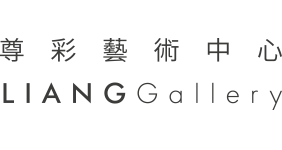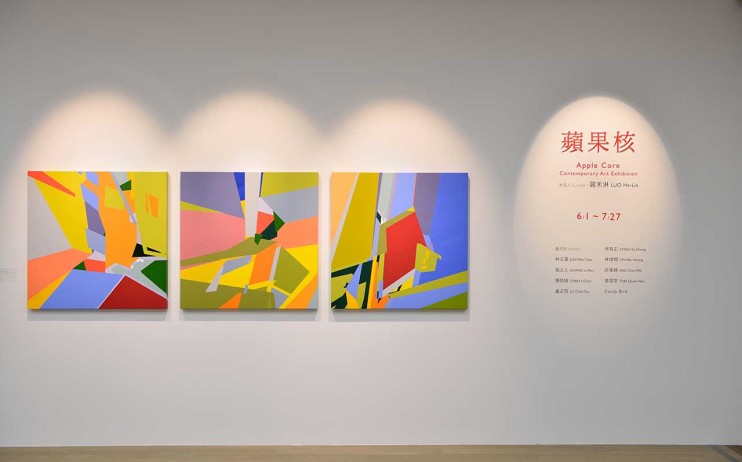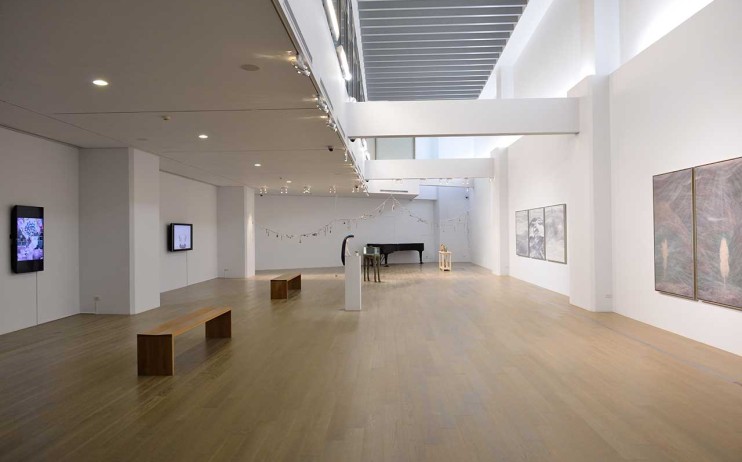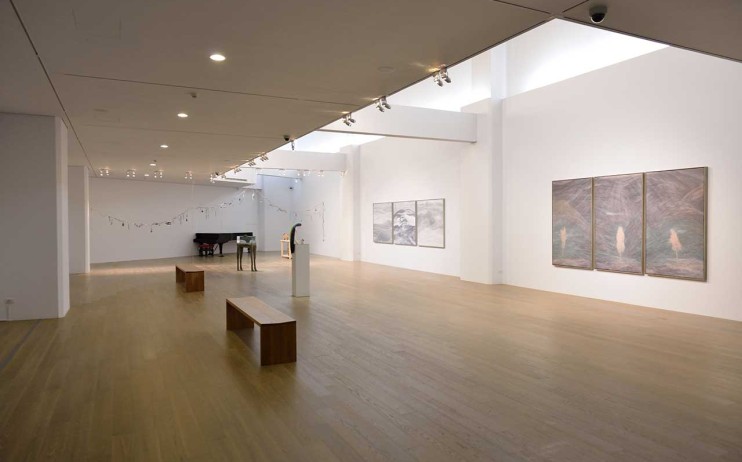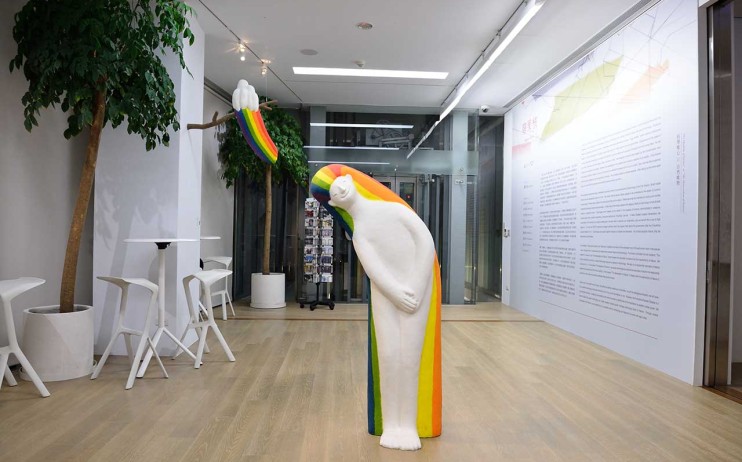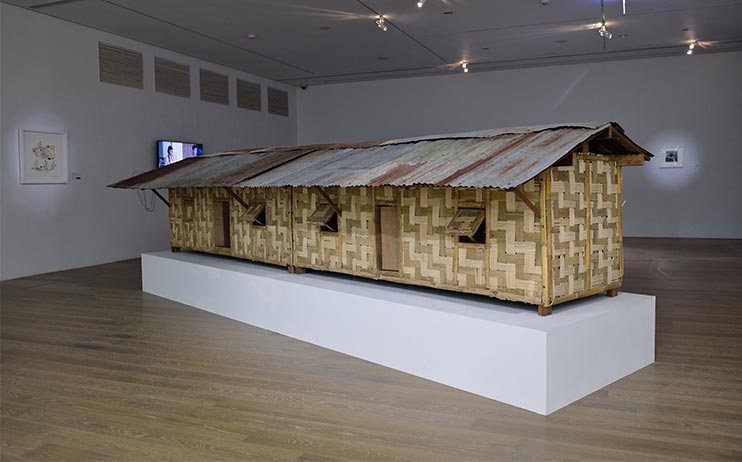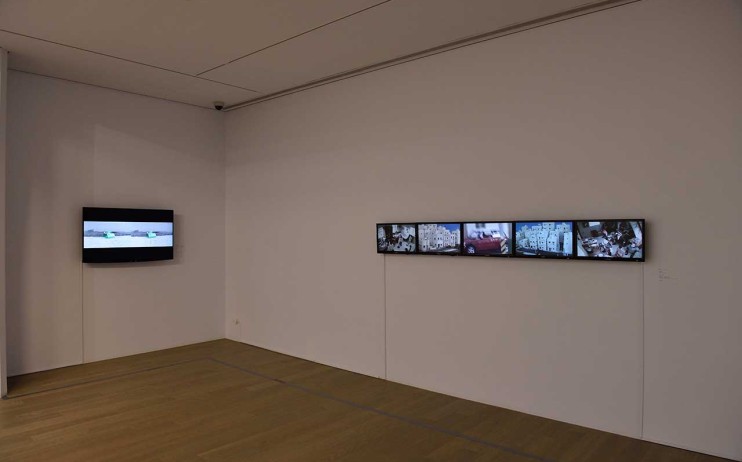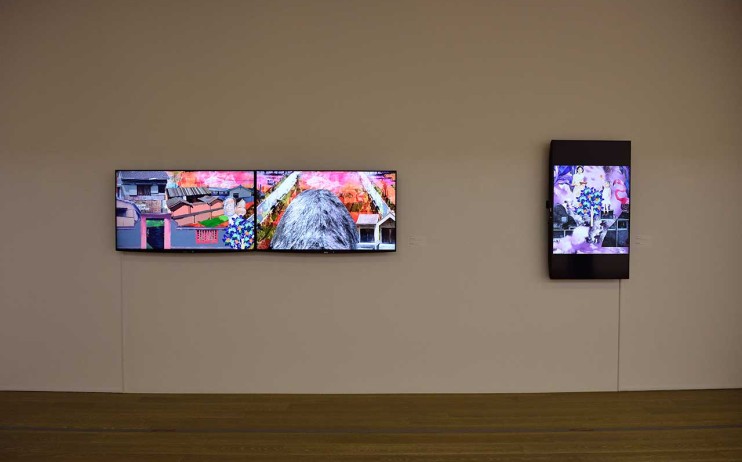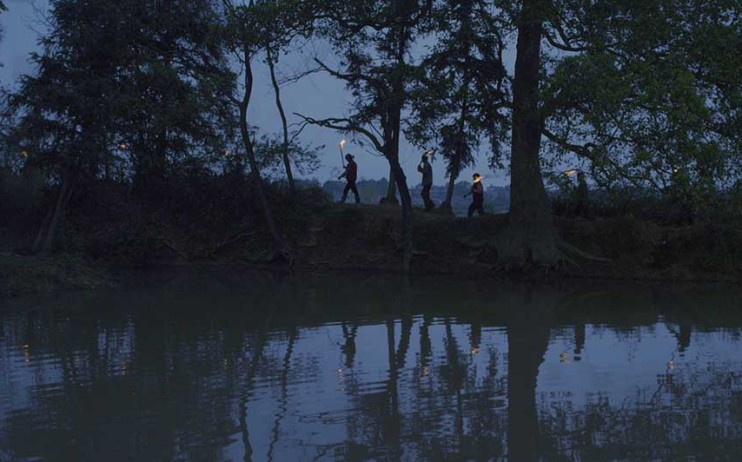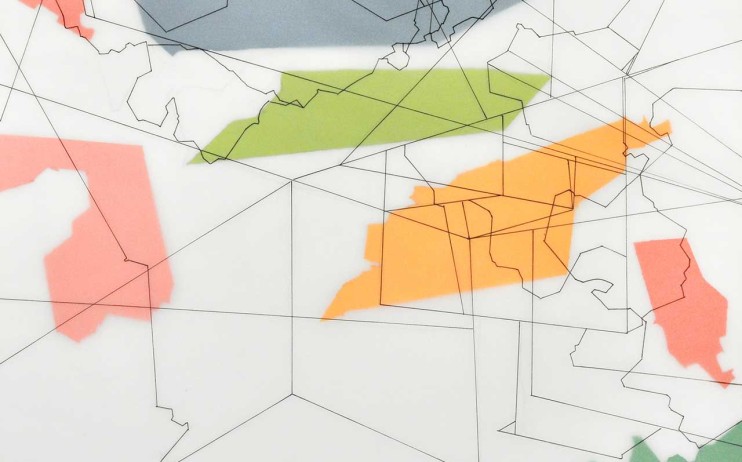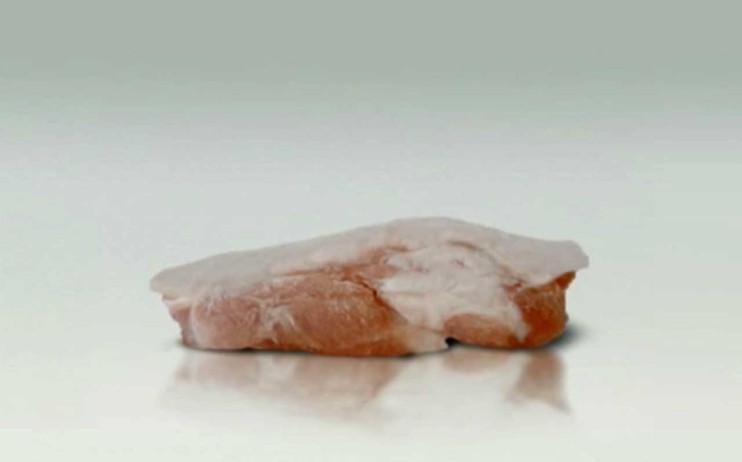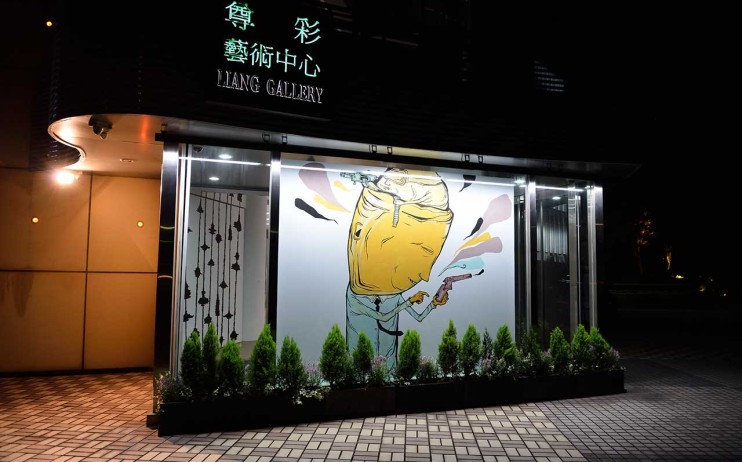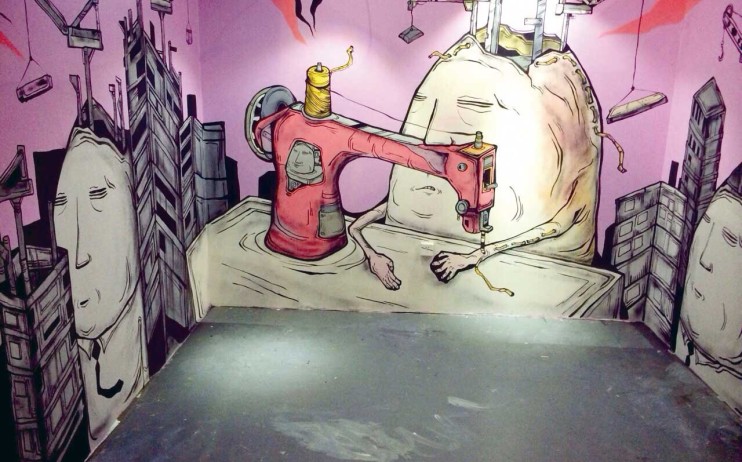Apple Core – Contemporary Art Exhibition
- 六月 01, 2014
- Exhibitions
- Duration: 2014.06.01 Sun. – 07.27 Sun.
- Opening: 2014.06.01 Sun. 6:00 pm
- Art Forum: 2014.06.15. Sun. 3:00 pm
- Speakers: Guo Jau-Lan, Wu Dar-Kuen
- Curator: Luo He-Lin
- Artists: Candy Bird, Lin Wei-Hsiang, Chang Li-Ren, Hsu Chia-Wei, Chen I-Chun, Tsai Chieh-Hsin, Lu Chih-Yun, Chou Yu-Cheng, Lin Wen-Tsao
“Faith” is not only our spiritual support but also the symbol which suggests human’s fear of Nature. As the Industrial Revolution has speeded up the development of technology, the age of electricity thus places “science” above the rest of the things. Gods and Nature are gradually ignored by humans. Meanwhile, technology stimulates humans’ “huge desires,” which creates a mechanical “speed” – the only possibility for humans to get away from or to fight against the God-given flesh. Empowered by the speed of moving, the speed of producing, the speed of information, we now welcome the escape of the spirit from the human flesh. As how Paul Virilio describes that technology makes “phantom limbs,” technological products also speed up the transformation from humans to the phantom-like beings. However, the acceleration is not realistic but is simply a rejection of physicality. If the physical body loses one’s faith in Nature, it can do nothing but to accelerate the speed until it is out of control. Soon, the final fall is expected, like how poison speeds up the consumption of Nature. The nutritious apple is a similar example. After eating up the whole apple pulp, one is left with the poisonous core without knowing what to do with it.
When capital controls technology, materialism becomes a trend in the development of technology in the 21st Century. Smart mobile devices are the inseparable parts of our life. The mobile Internet service allows people to be connected to the stream of humans’ consciousness. People are as zealous for technology as they are for religion. Desire becomes the motivation to build up an intimate relationship between humans and technology. A fetish about technology replaces the religious belief, as technology shows its best values in a capitalist society. “Technology fever” speeds up the validity of the progress of science, demonstrated in weapons, nuclear power, clone, genetic engineering, microwave electronics, “Big Data,” and etc. In Mary Shelley’s classic Frankenstein, the combination of technology and capital creates giant monster which is beyond our imagination, and we cannot find a way to fight against it. It is like how TEPCO adopts an arrogant attitude which has placed itself above the government after the Fukushima Nuclear Disaster in 2011. Technology and capital together become a mutated neo-liberalism. As humans abandon Nature, they are abandoned by technology.
The exhibition “Apple Core” attempts to highlight the theme of the forbidden fruit in the well-known myth in the popular culture, through which it reexamines the relationship between Nature and technology. The theme is divided into two subjects: “The Idealism of Science” and “The Materialism of Nature,” which reverse the rationality of science and the inauthenticity of Nature. We intend to identify the divinity in a post–Technology Age as we oppose to technology. We also try to explore the rationality of Nature as we return to it. In the subject “The Idealism of Science,” we adopt technological products as examples to explore the relationship between the products and the human beings. Candy Bird’s graffiti work “Carrot Man Series” reflects the mutation of Carrot Man who lives in a technological society. Chou Yu-Cheng’s video work “Biotechnology” creates a virtual technological product, mocking how the society relates technological products to a healthy body and questioning the authenticity of TV commercials. Lin Wen-Tsao’s painting “Painting Series” visualizes the city of the moment and interprets the daily news through paintings. The simplistic but yet complicated contours in the images echo our life condition. Chang Li-Ren’s video work “Model Community” simulates news footage of model dummies being attacked by weapons. It does not seem real, but it really happens as shown on the image, through which it evokes people’s reflection on weapons and media. Hsu Chia-Wei’s video work “Huai Mo Village” documents the story of the orphanage at Huai Mo Village. Through the oral history of the orphanage owner, it documents the interaction between the kids and the owner. The kids feel curious about technology, but they are also suffering from it.
In the subject “The Materialism of Nature,” it begins with the authenticity of Nature to explore the most explicit connection between Nature and humans. Lin Wei-Hsiang’s paintings “The Scenery with Three Trees” and “Traces of Travel 20-22” depict the natural landscape which seems disappear but is still clearly seen to narrate a comparison between Nature and life. Hsu Chia-Wei’s video work “Marshal Tie Jia Series” adopts the procedure of documents and field studies to document the folk religion and the local culture as well as to reexamine the connection between Nature and humans. In Chen I-Chun’s video animation work “Shui Yuan Lin Legend,” she transforms the legendary story of her grandfather Lin Shui-Yuan, who was a feng shui master, as told by her parents when she was a child. Starting from family, blood, the culture and the history during the Japanese rule, she gradually returns to the observation on Nature, supernatural spirits, and deities. Tsai Chieh-Hsin’s sculpture “Strolling Along Rainbows” and “Seeing Rainbows” use recycled paper to sculpt her imagination of Nature. Nature is thus recreated through the natural material. Lu Chih-Yun’s sculptures “The Rootless Island” and “The Section Of Our Existence” use construction waste and ready-made to create an animal-like image. The returning Nature is returning to Nature again.
“Apple cores,” like what the rumor says, may either be deadly poisonous or harmless. In such an ambiguous situation, we will never know whether technology will be like Pandora’s box for us, even fore Nature, or not. However, the Fukushima Nuclear Disaster is a very important warning. Hopefully, the exhibition will invite the public to rethink about the importance to abolish nuclear power. We should believe that green technology can totally replace nuclear power, bringing technology back to Nature. Through another conversation with Nature, we are searching for a possible way for technology and Nature to co-exist with each other.
